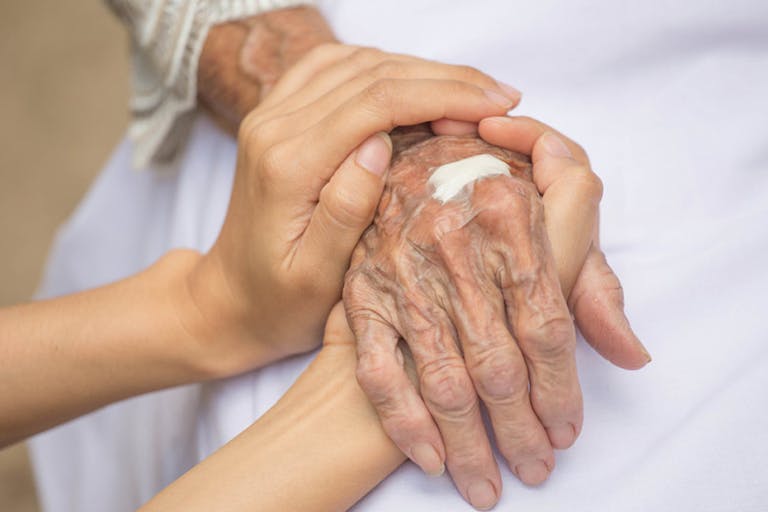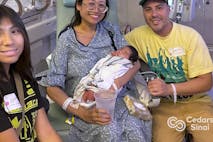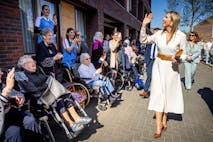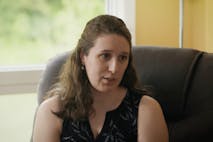
Welsh women denied needed pregnancy medication are getting abortions
Cassy Cooke
·
Nurses launch program at Georgetown to ensure that no one dies alone
The act of dying is not something most people anticipate with excitement. Further making death something to dread is the idea of dying alone, in a cold, stark hospital room, surrounded by machines, and with no loving family or friends to be there as you leave this life. Multiple studies, including ones published in the New England Journal of Medicine and the British Medical Journal, show that people often choose assisted suicide for reasons other than fear of pain or suffering. Often, they fear they are a burden on their loved ones, or feel that they have no support. But one program, started by a nurse and recently introduced at Georgetown University Hospital, ensures that the dying retain some of their dignity and humanity, and that no one ever dies alone.
It started in 2001, after an elderly patient asked nurse Sandra Clarke to sit with him for a little while. She was too busy, but promised to come back after rounds; unfortunately, by then, it was too late. The patient had died, alone in his room. This inspired Clarke to start the “No One Dies Alone” program. Beth Orrell, a palliative care nurse, and her co-worker, Dr. Robin Gross, recently brought the program to Georgetown, pitching it to every church in the area and eventually amassing a group of 15 volunteers. The volunteers were trained in both the physical and spiritual aspects of death, and tailor their approach to each individual patient, playing music, holding hands, and reading excerpts of poetry or religious material. Their work ensures that in a patient’s dying hours, they receive compassion, companionship, and care, especially if they have no one else to be there for them.
READ: When assisted suicide was legalized, her insurance stopped paying for treatment
Volunteer Maryel Rodgers, a parishioner at Our Lady, Queen of Peace Catholic Church in Arlington, wrote about her encounter with a dying woman named Grace:
Article continues below
Dear Reader,
In 2026, Live Action is heading straight where the battle is fiercest: college campuses.
We have a bold initiative to establish 100 Live Action campus chapters within the next year, and your partnership will make it a success!
Your support today will help train and equip young leaders, bring Live Action’s educational content into academic environments, host on-campus events and debates, and empower students to challenge the pro-abortion status quo with truth and compassion.
Invest in pro-life grassroots outreach and cultural formation with your DOUBLED year-end gift!
The woman lay still “under a purple fleece blanket sprinkled with brightly colored hearts and edged with broad fringes,” recalled Rodgers. “Her graying hair spilled across the pillow. Her breath was firm and steady. She seemed to be unaware of the commotion of the busy hospital unit.”
… “How do I say goodbye? I am looking at you, robed in that soft blanket of royal purple and I think of the woman in the Gospel story who was eager to touch the fringes of Jesus’ garment,” Rodgers wrote in her journal, which was later published in an Ignatian Volunteer Corps newsletter. “Let me now touch the fringes of your garment as you move into eternity. Thank you for your company.”
The volunteers have a support group to ensure that the emotional toll of comforting the dying doesn’t become too overwhelming. And even though many of the patients are not conscious or weakened by their illness, Orrell believes their work still restores a sense of humanity for the dying.
“I just think that human presence is so important at the end of someone’s life,” she said. “People are not alone when they’re born and they should not be alone when they die.”
Live Action News is pro-life news and commentary from a pro-life perspective.
Contact editor@liveaction.org for questions, corrections, or if you are seeking permission to reprint any Live Action News content.
Guest Articles: To submit a guest article to Live Action News, email editor@liveaction.org with an attached Word document of 800-1000 words. Please also attach any photos relevant to your submission if applicable. If your submission is accepted for publication, you will be notified within three weeks. Guest articles are not compensated (see our Open License Agreement). Thank you for your interest in Live Action News!

Cassy Cooke
·
Human Interest
Angeline Tan
·
Human Interest
Bridget Sielicki
·
Human Interest
Nancy Flanders
·
Human Interest
Nancy Flanders
·
Human Interest
Nancy Flanders
·
Analysis
Cassy Cooke
·
International
Cassy Cooke
·
Politics
Cassy Cooke
·
Analysis
Cassy Cooke
·
International
Cassy Cooke
·